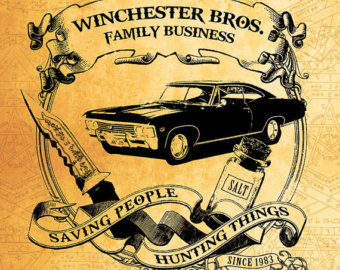The last REST client you will ever need
It's better to REST in BED.
Loïc Hoguin - @lhoguin
Erlang Cowboy and Nine Nines founder
Why this talk?
REST is great

The family business

Open your mind

REST constraints
Client-server architecture
- Different set of concerns
- Client cares about processing or rendering
- Server cares about storing and making information available efficiently
- Keeping concerns separate allow client and server to evolve independently
Stateless
- Messages always contain all data needed to process the request
- Including authentication information if required
- That doesn't mean you can't use cookies!
- That means you must use them responsibly
- The server keeps no session state around
Cacheable
- Resources may be cached by any component, including the client, the server and any intermediary
- All resources are explicitly or implicitly marked as (not) cacheable
Uniform interface
- All components use the same rules to speak to each other
- Makes it easy to understand the interactions
- A number of constraints are required to achieve this
- We will see them in a few minutes!
Layered system
- Components only know about the components they talk to
- For example a proxy completely hides what's behind it
- This is true for both directions
- There may be more proxies in one way or another
Code on demand (optional)
- Code may be downloaded to extend the client functionality
- This is optional, you can't assume the client will receive or be able to execute the code
- Javascript is a common example of this
Uniform interface in details
Resources and resource identifiers
- Any information that can be named can be a resource
- A resource is a conceptual mapping to a set of entities
- For example one user or a group of users
- A resource is identified by a URI
- Typically we talk about resources and resource collections
Resource representations
- Sequence of bytes + metadata
- Representation metadata (media type, modification time...)
- Resource metadata (related resources, additional representations...)
- Control data (parameterized requests, handling instructions...)
Self-descriptive messages
- Messages contain everything needed to decipher them
- All representations must have a media type in the message
- The media type must be agreed upon by both endpoints
- Negotiating the appropriate media type is a big part of REST
Hypermedia as the engine of the application state
- Interactions must be entirely driven by hypermedia
- A client only needs an entry point and basic understanding of the media types being used by the service
- Resources and functionality can be discovered at runtime
What media type should we use?
Not just one media type
- Each resource should have at least one media type
- The media type defines the structure and accepted values
- It's pretty much what you do when you document your API
- So why not give them a name and use that in the protocol?
- We still need a basic type to extend upon
Why not JSON?
- No concept of links or link relations
- Unable to deal with binary data
- Not very good with the map datatype
- Very slow and very expensive to parse
- Stop using JSON, save the planet!
Why not msgpack?
- No concept of links or link relations
- No bignums
- No decimals
- Not very good with the map datatype
Why not HTML?
- Everything is a string
- Unable to deal with binary data
- No easy mapping of types onto HTML
- Different use case than what we are looking for really
Why not XML?
- Everything is a string
- Unable to deal with binary data
- No easy mapping of types onto XML
- You can, but it's damn verbose
- XML is probably slower and more expensive to parse than JSON
What then?

BED
Goals
- Hyperlinks and link relations
- Binary, explicit sizes, efficient to parse
- Small, exponentially smaller the larger the data gets
- Good type coverage, extensible
- No NULL value
- Fully specified
Media types 1/2
- application/x-bed
- application/x-bed-stream
Media types 2/2
- Again, don't be shy, define your own media types!
- Make sure to advertise both your custom type and the basic type
- This way you can process the data even if you don't know its structure
Hyperlink 1/2
- Link without link relation
- Link with link relation
- Better for automated processing
- Link relations are standard but you may use custom relations
Hyperlink 2/2
- Link is a string
- Link relation is a symbol
- Highly recommended to only use fully qualified links
- The client should not build links unless strictly required
- This is true with any media type
Symbol 2/9
- A lot of data is sent as maps
- A lot of maps share the same keys
- Repeating these keys over and over is madness
- There's a better way
Symbol 3/9
- Keep track of symbols already sent
- Replace repeated symbols with a numerical value
- Continue doing that until the end of the message
- Or the end of the stream!
- It's just like atoms, isn't it?
Symbol 4/9
- Symbol dictionary starts with
false (0) and true (1)
- You can create a custom content-type that has more pre-defined
Symbol 5/9
- First message
- JSON:
{"compact":true,"schema":0} (27 bytes)
- MsgPack:
82 A7 compact C3 A6 schema 00 (18 bytes)
- BED:
C2 27 compact 41 26 schema 80 (18 bytes)
Symbol 6/9
- Subsequent messages
- JSON:
{"compact":true,"schema":0} (27 bytes)
- MsgPack:
82 A7 compact C3 A6 schema 00 (18 bytes)
- BED:
C2 42 41 43 80 (5 bytes)
Symbol 7/9
- We sacrifice a little CPU power for a large size gain
- Especially for collections and large streams
- We don't sacrifice too much
- Even streams tend to use a limited number of symbols
- That means the lookup time is not significant
Symbol 8/9
- All this without compression
- All this without schemas
- Just call the encode function and you're done!
- Okay some languages might need a little more wrapping than others...
Symbol 9/9
- The symbol string is limited to 255 bytes (not characters!)
- The first 32 symbols cost exactly 1 byte
- This never changes, so choose these 32 symbols well!
- Subsequent symbols cost 2 or 3 bytes
- 2 bytes when there are less than 8192 symbols defined total
- 3 bytes when there are more
Binary
- Size followed by sequence of bytes
- Size may be encoded as 16-bit, 32-bit or 64-bit unsigned integer
- Minimal binary size: 3 bytes
String
- Must be valid UTF-8
- Decoding validates UTF-8 by default (optionally can be disabled)
- Size followed by sequence of bytes
- Character-terminated strings are the devil!
- Size may be encoded as 8-bit, 16-bit or 32-bit unsigned integer
- Minimal string size: 2 bytes
RFC 3339 date
- Why?
- Because they are a lot more common than you think
- By standardizing we avoid having tons of different formats
- That means less bugs, especially when converting
- RFC 3339 includes time, date and timezone information
- It's a subset of ISO 8601
- 2 bytes followed by the date as a sequence of bytes
Integer
- 6-bit, 8-bit, 16-bit, 32-bit and 64-bit signed integer
- Positive and negative bignum integer
- Minimal integer size: 1 byte (-32 to 31)
Floating-point
- IEEE 754 binary64 (double)
- IEEE 754 decimal64
- Both take 9 bytes
Map
- Size followed by unordered list of pairs of key/values
- If any duplicate, only the last key/value is kept
- Size may be encoded as 5-bit, 16-bit or 32-bit unsigned integer
- Minimal map size: 1 byte
- Maps smaller than 32 keys take 1 byte + the size of pairs
Array
- Size followed by list of values
- Size may be encoded as 5-bit, 16-bit or 32-bit unsigned integer
- Minimal array size: 1 byte
- Arrays smaller than 32 values take 1 byte + the size of the values
List
- 1 byte to indicate the start of a list
- 1 byte to indicate the end
- For special cases only
Extensions
- Define up to 256 additional types
- You can do that through custom media types
- 8-bit, 16-bit, 32-bit or 64-bit value
- Blob of 8-bit, 16-bit, 32-bit or 64-bit unsigned size
Wrap-up
- BED is...
- Great for REST (hypertext)
- Great for Websockets (exponentially smaller as time goes on)
- Comfy!
But wait...
- Doesn't binary make it harder to debug things?
- No
- A large enough JSON is as indecipherable as a large enough binary
- When debugging you can just add a well placed decode call
- Plus nothing is stopping you from providing JSON at the same time!
Writing a REST client
Warning
- This part has no code written for it at this point
- Sorry!
- The BED format was just too interesting to work on
- And we're probably running out of time anyway
Goals
- Manipulate resources
- Only use URIs
- Don't look into or validate representations
- Don't parse representations (with exceptions)
- Automatic caching
- Provide a default but replaceable implementation
- Again, URI based!
- Automatic discovery of service capabilities
HTTP client
- Use
gun as the client
- Always connected, so great for automation
- What do you call a
gun based REST client?
HTTP client
- Use
gun as the client
- Always connected, so great for automation
- What do you call a
gun based REST client?
gunr of course!
Service map 1/2
- We don't want to hardcode URIs
- We want to obtain them directly from the service
- We can generate a wrapper using this information
- We could use "crawling" but it's impractical
- RSDL specifications do what we want
Service map 2/2
- RSDL is ugly XML though :(
- RSDL includes way more information than we need
- It literally describes everything
- It's good, but life is too short
- A subset of RSDL generated from a simpler DSL might be workable
- Or just send that simpler DSL
Cache
- A
get call first looks into the cache
- It builds a request based on cache contents
- The server dictates the client how cache should be used
- So we can safely rely on it
Going further
- We could go further with RSDL
- Is it worth it, though?
- Would people really use this stuff to its full potential?
- I'm not so sure...
- Sounds like too much work for too little reward
Putting it to rest





